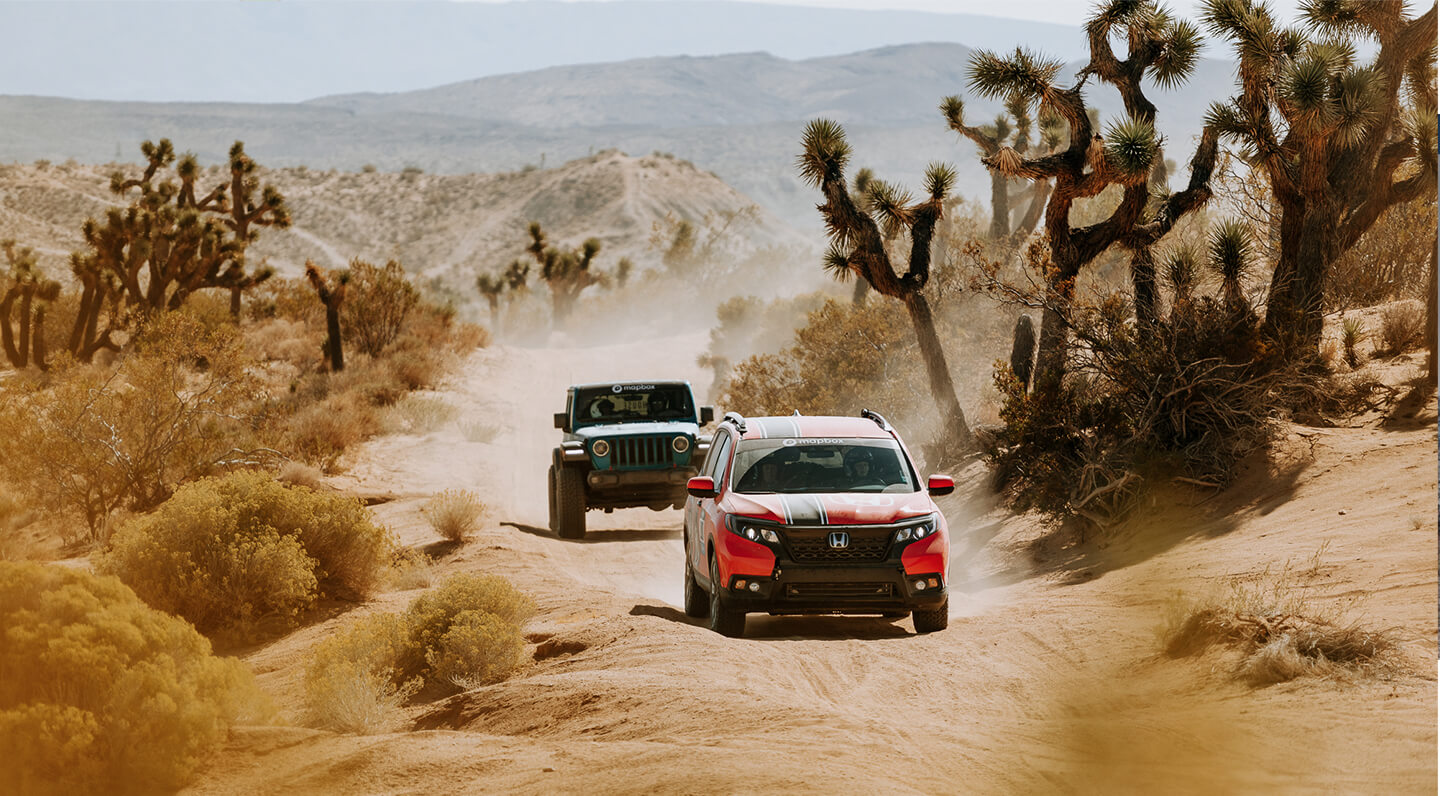
Photography: Nicole Dreon, Paolo Baraldi, Tim Calver, and Richard Giordano
During most off-road racing in North America, from Baja to King of the Hammers, navigators heavily rely on GPS units. They not only direct the driver as to where to go, but also alert them to any approaching dangerous circumstances. And even the longest races, such as the Baja 1000, are completed in under 48 hours. By contrast, the Rebelle Rally takes place over eight days and requires teams to navigate with only a map and compass. No GPS, cell phones, or other technology are allowed. The Rebelle Rally is the longest navigation rally in the United States, covering over 1,400 miles. Oh, and we should mention that the competition is only open to women.
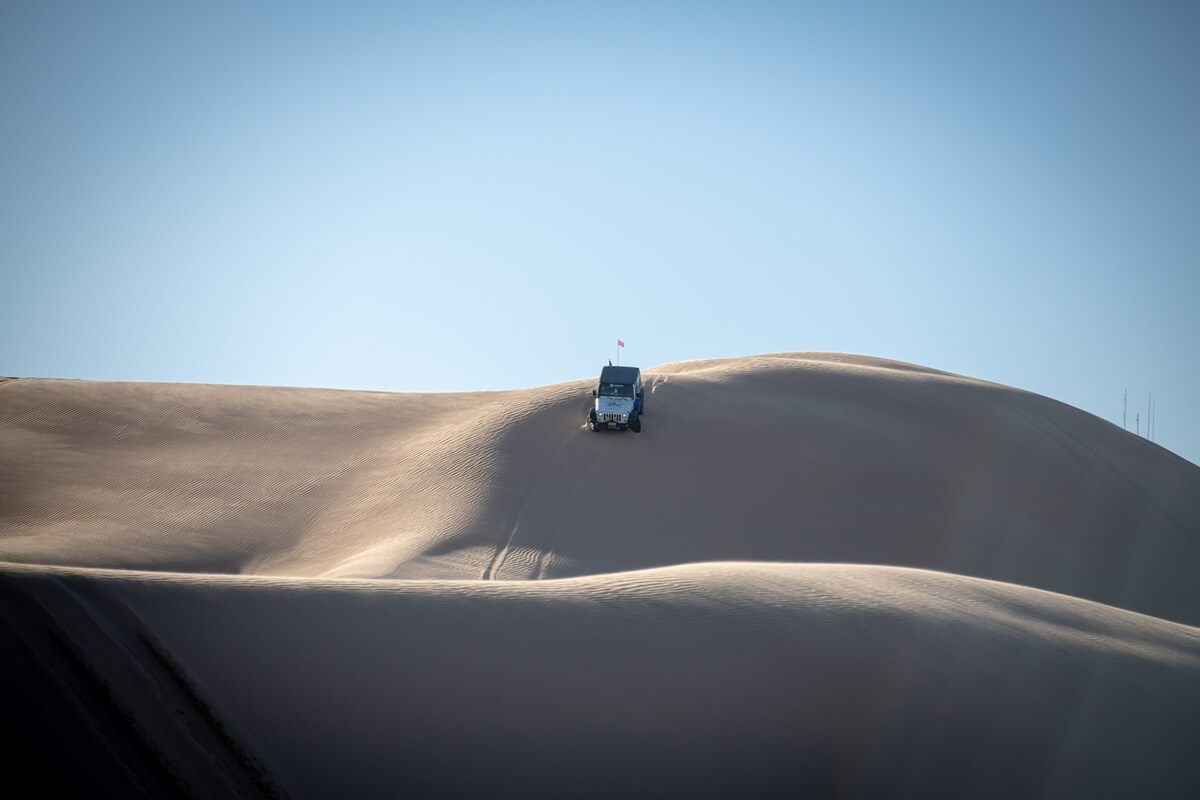
The Rebelle Rally covers over 1,400 miles during eight days. Competitors have to navigate through a variety of terrain ranging from basic dirt roads to the big dunes of Glamis.
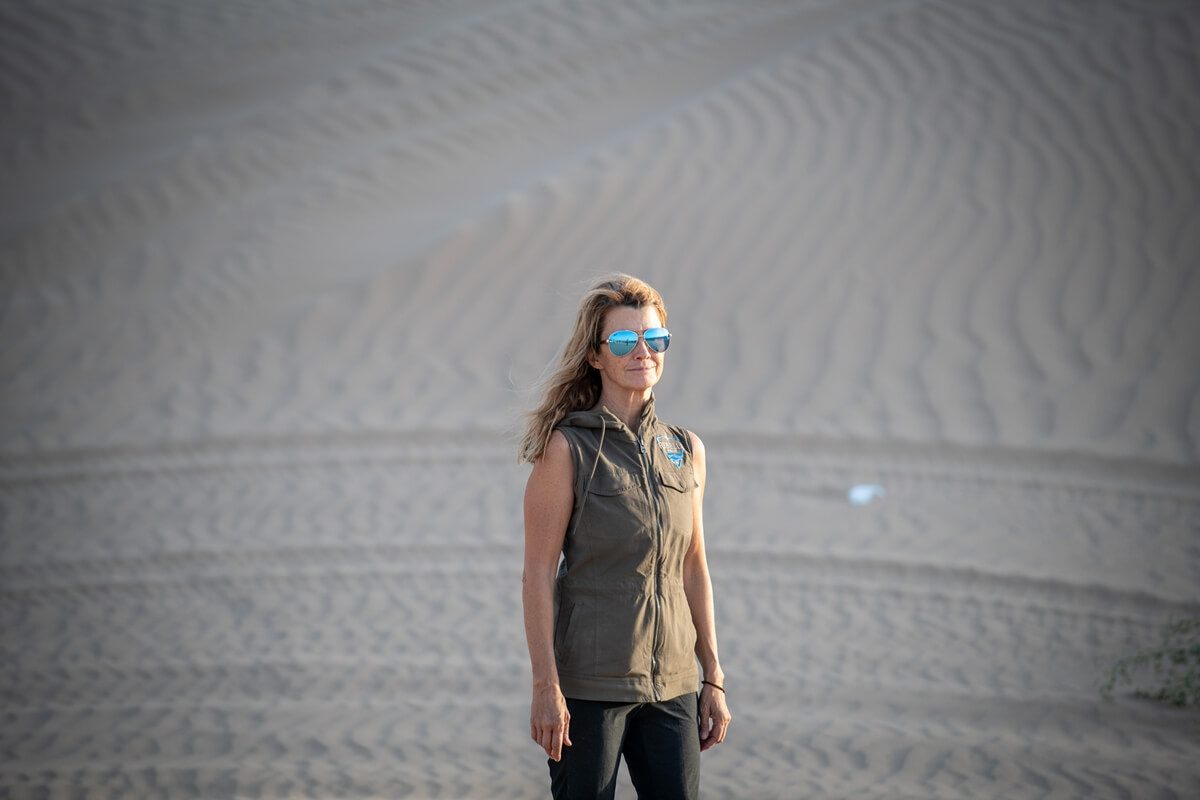
The Rebelle Rally is the brainchild of Emily Miller. She leads a staff of 70 who she describes as “great, not good.” They are split amongst course workers, timing, safety, base camp operations, cooking, and media. The ratio of staff to competitors is nearly one-to-one at the Rebelle Rally making for a well-run and organized event.
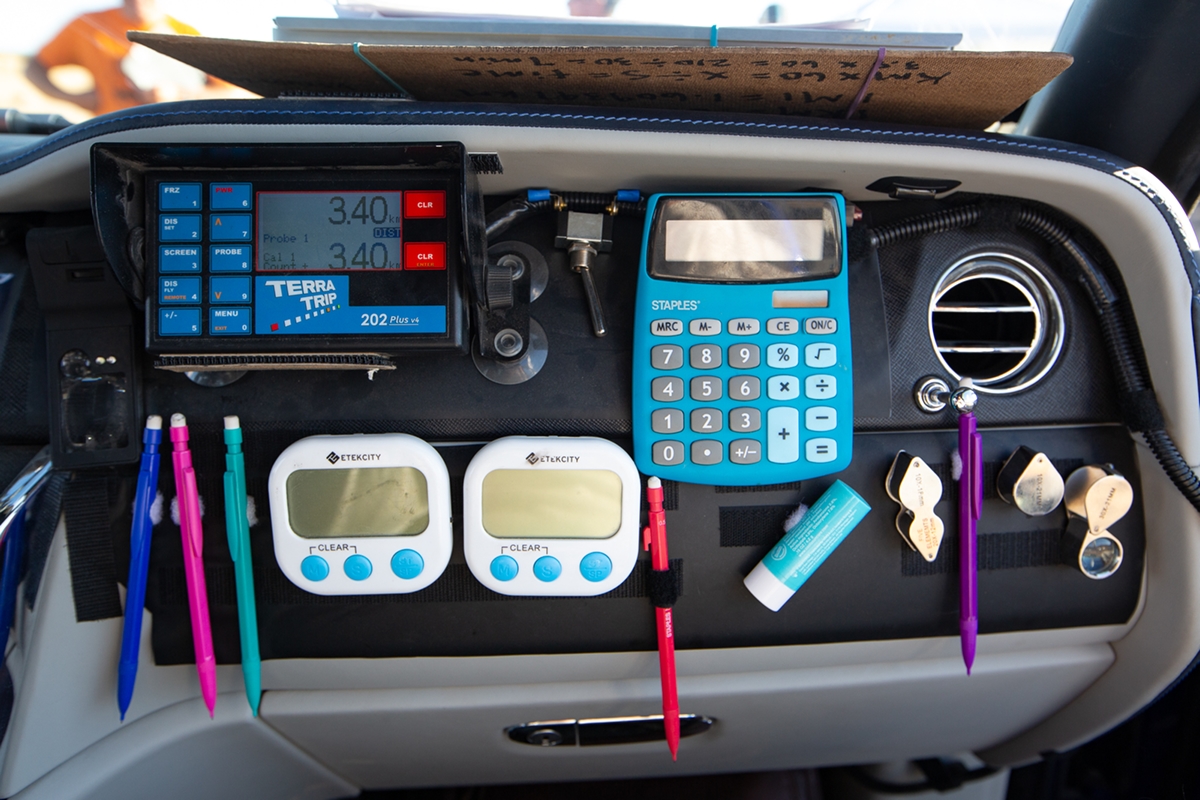
No GPS or cell phones are allowed at the Rebelle Rally. Maps, compasses, rulers, and calculators are used to find direction and distance. The Terra Trip odometer is used to maintain a set speed. This is the dash of the Rolls-Royce Cullinan that Emme Hall and Rebecca Donaghe took to victory this year in the Crossover Class.
The Backstory
The Rebelle Rally is the result of Emily Miller’s vision and hard work. Miller’s background is in event planning and sports management. Her recent experience coordinating media for King of the Hammers for the past several years has primed her to create an event as epic as the Rebelle Rally. But her path to creating the Rebelle began long before that. She was first introduced to desert racing through her work with Rod Hall. The legendary off-road icon and her work with him had a profound influence on Miller’s life and the path that it has followed. She made history as the first woman to solo the Vegas to Reno race in 2008. During the decade that followed, Miller worked with Hall as a driving instructor for BFGoodrich. In 2011 she became the first American to podium at Morocco’s Rallye Aicha des Gazelles. There was nothing remotely similar to the Rallye Aicha des Gazelles in the United States, so Miller created her own rally. Unlike the Gazelle Rally, the goal isn’t merely to drive in a straight line for the shortest possible distance. The Rebelle Rally is far more nuanced than that.
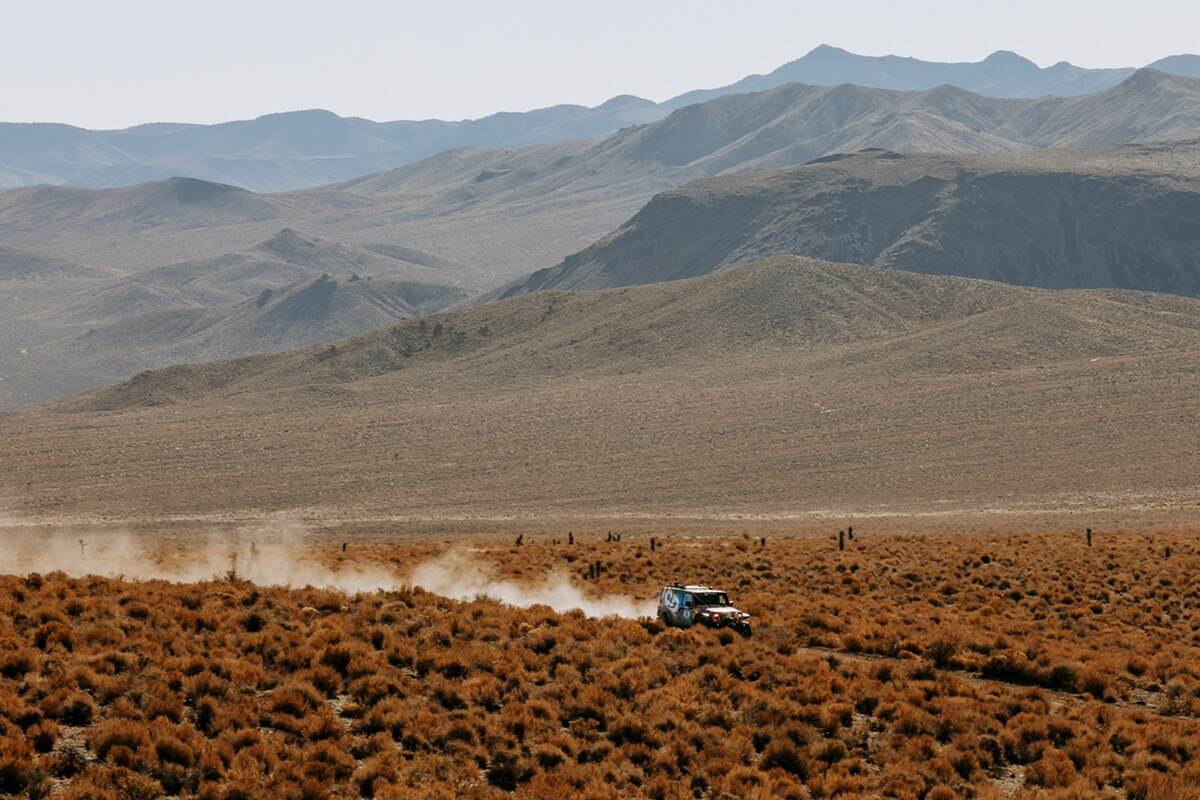
Jimmy Lewis and Emily Miller spend months finding roads that are as beautiful as they are challenging. Here Kris Vockler and Elise Bent of Team Fast ‘N Curious cross one of Nevada’s numerous basins early in the rally. It was the second Rebelle for both Vockler and Bent, but their first as teammates. The team finished in 13th place.
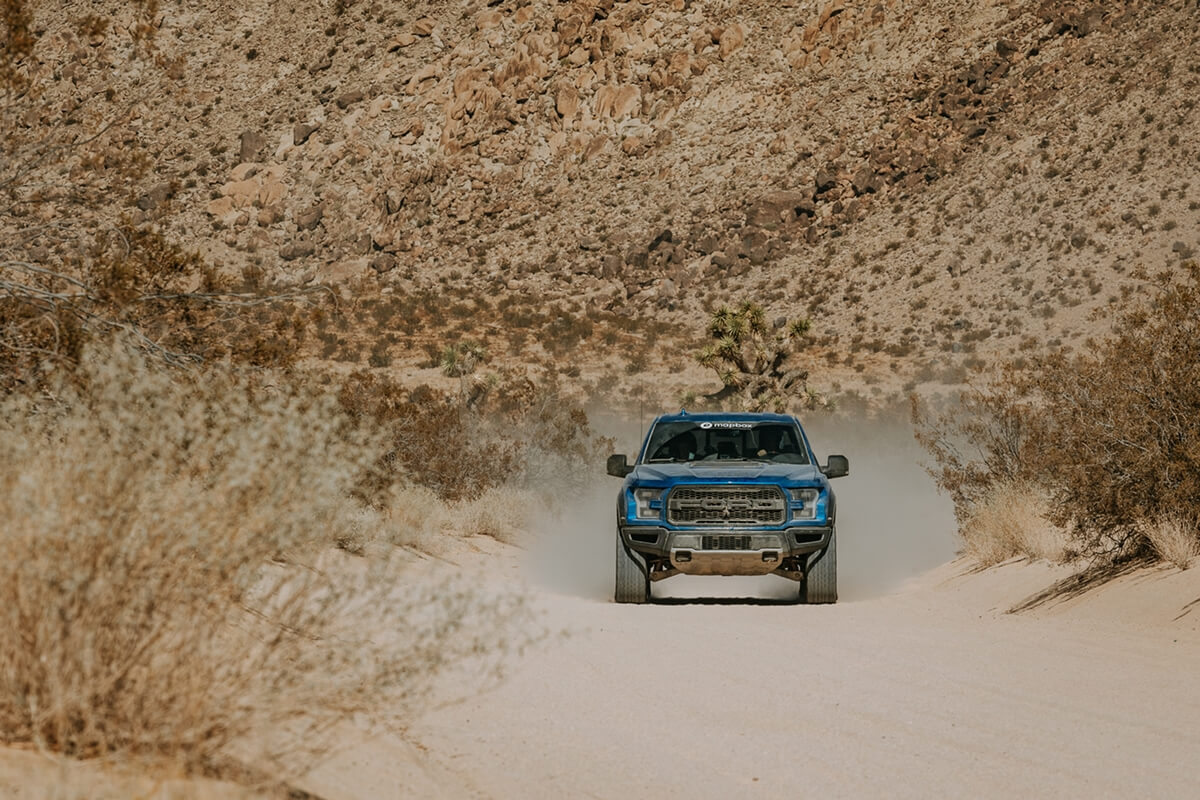
Linsdey Hunter and Sarah Homer finished third in the Rebelle Rally in this Ford Raptor. The two women were neighbors who met after Hurricane Harvey destroyed their Houston homes in 2017. More disaster struck this year when a distracted driver totaled Lindsey’s Raptor, but Ford stepped up with a new Raptor for them to compete in.
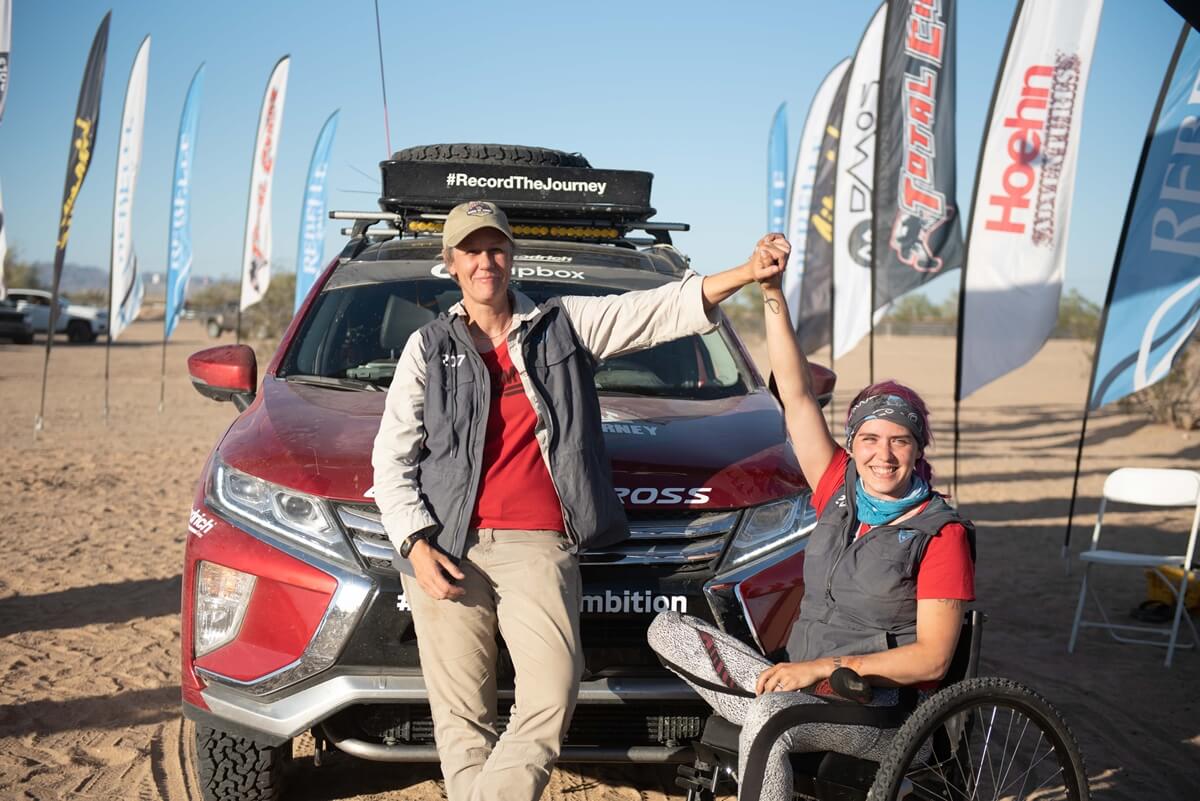
Karah Behrend made history as the first adaptive athlete to complete the Rebelle Rally. Karah and her teammate Rachael Ridenour finished second in the Crossover Class in their Mitsubishi Eclipse Cross. Both Behrend and Ridenour are veterans, with Behrend serving seven years in the Air Force and Ridenour serving 31 years in the Army.
The Format
The Rebelle Rally differs from a traditional race where the point is to finish as quickly as possible. By contrast, the Rebelle Rally is about precision driving and navigation. There is no GPS, no pre-running, and a highly modified vehicle is not required to be successful at the Rebelle Rally. “My vision was to create an event that rewards intelligence, proper planning, and attention to detail,” Miller explains. Teams are given paper maps and coordinates for checkpoints that they must reach.
Rebelle checkpoints (CPs) follow the same color scheme as snow ski runs with green, blue, and black CPs. The green checkpoints are the easiest, marked by a staff member and a large green flag. The green CPs are worth the most points and are mandatory for all teams. Blue CPs are optional and more challenging to find, marked only by a small stake or flag in the ground. Most difficult to locate are black CPs, which have no visible marker on the ground. While it may seem counterintuitive, the easy-to-find green CPs are worth the most points, and the black CPs are worth the least points. This keeps the scoring close throughout the competition.
The event also includes Rebelle Enduro Challenges (REC), which are similar to Time-Speed-Distance (TSD) rallies. RECs involve a set route with an assigned start time and target average speed through the course. Participants use a roadbook common to rally raid events such as Dakar to navigate to the next Green CP while trying to maintain a designated average speed. Points are awarded for being “on time” at each time control. Rather than have a speed zone like other off-road events, Miller uses the RECs to control speed through places like Death Valley National Park while challenging competitors and putting points on the line.
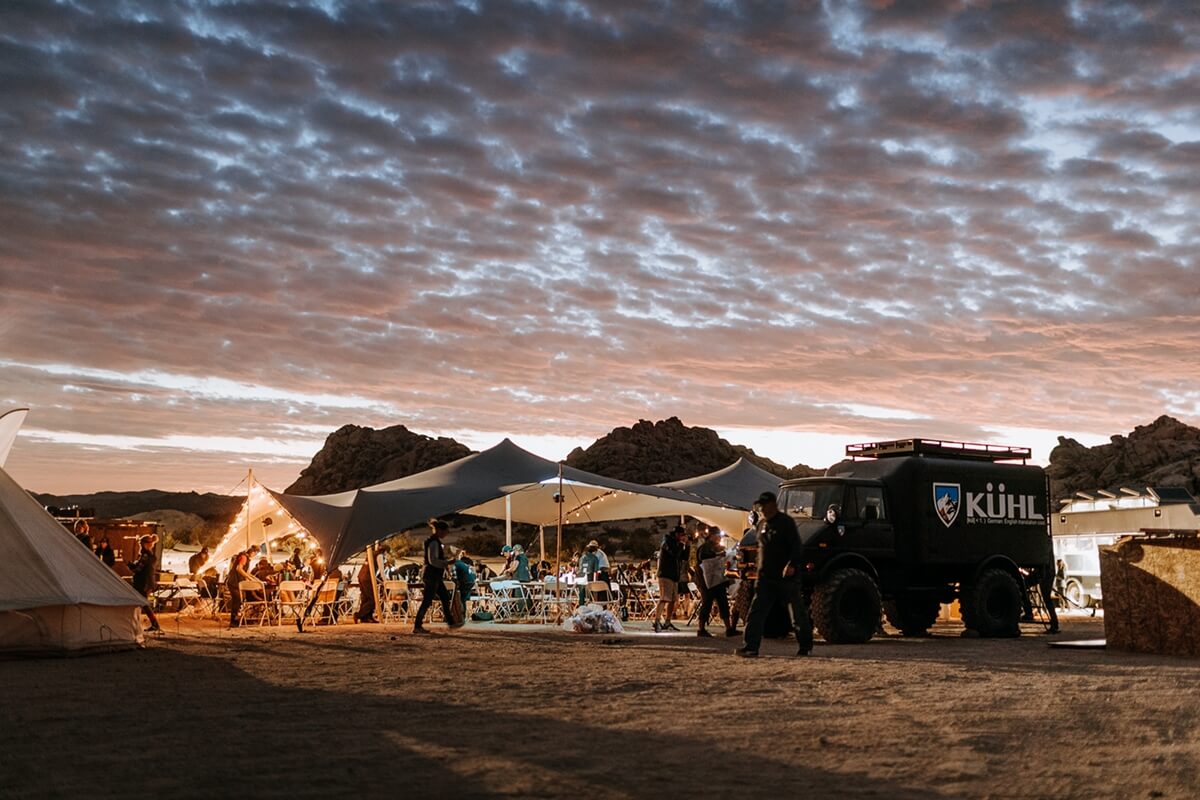
Like the Dakar Rally, the competitors camp at the end of each stage in a bivouac. There are no hotels or wifi, but the food is excellent.
The Course
The very fact that it isn’t a race has allowed the Rebelle Rally to access land that would otherwise be off-limits. This year the rally not only crossed through Death Valley National Park, but Joshua Tree National Park, multiple BLM districts, and half a dozen OHV areas as well. Now in its fourth year, the Rebelle Rally starts each year at Squaw Valley, near picturesque Lake Tahoe, and meanders its way to the Imperial Sand Dunes (aka Glamis).
The route changes each year, keeping it interesting for veteran competitors and leveling the playing field. Miller and Course Director Jimmy Lewis work year-round to create a route that is as beautiful as it is challenging, finding remote ghost towns and old mining claims along the way. Lewis, like most of the 70 people that comprise the Rebelle Rally staff, has a pedigree just as impressive as Miller’s. A legend on two wheels, he has won the Baja 1000, the International Six Day Enduro four times, and podiumed at the Dakar Rally.
The route is designed to be easier at the north end, early in the rally. Teams spend the first few days running on dirt roads, allowing them to become familiar with navigation and mapping. Held in October, it is also quite cold at night in the higher elevations of northern Nevada, adding to the challenge. As the course moves south, the weather warms up, but dirt roads give way to open OHV areas such as Johnson Valley. There paths crisscross lakebeds and hillsides in all directions. The final day of the event takes place in the Imperial Sand Dunes. In the big dunes, there are no roads and few visual markers to use for navigation. The dunes often determine the winner.
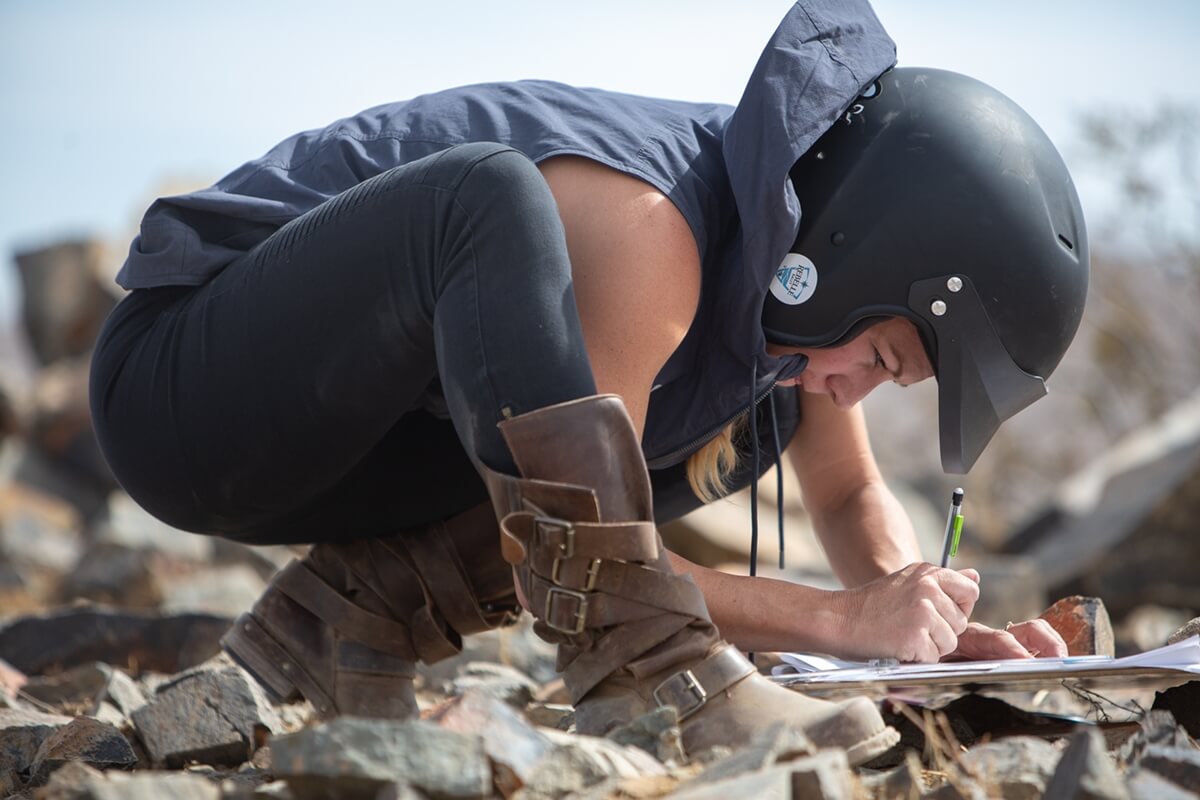
Navigation plays a huge role in the Rebelle Rally. GPS units, phones, and other electronic aids are not allowed. Competitors must go old school using only maps and compasses to make their way through the course.
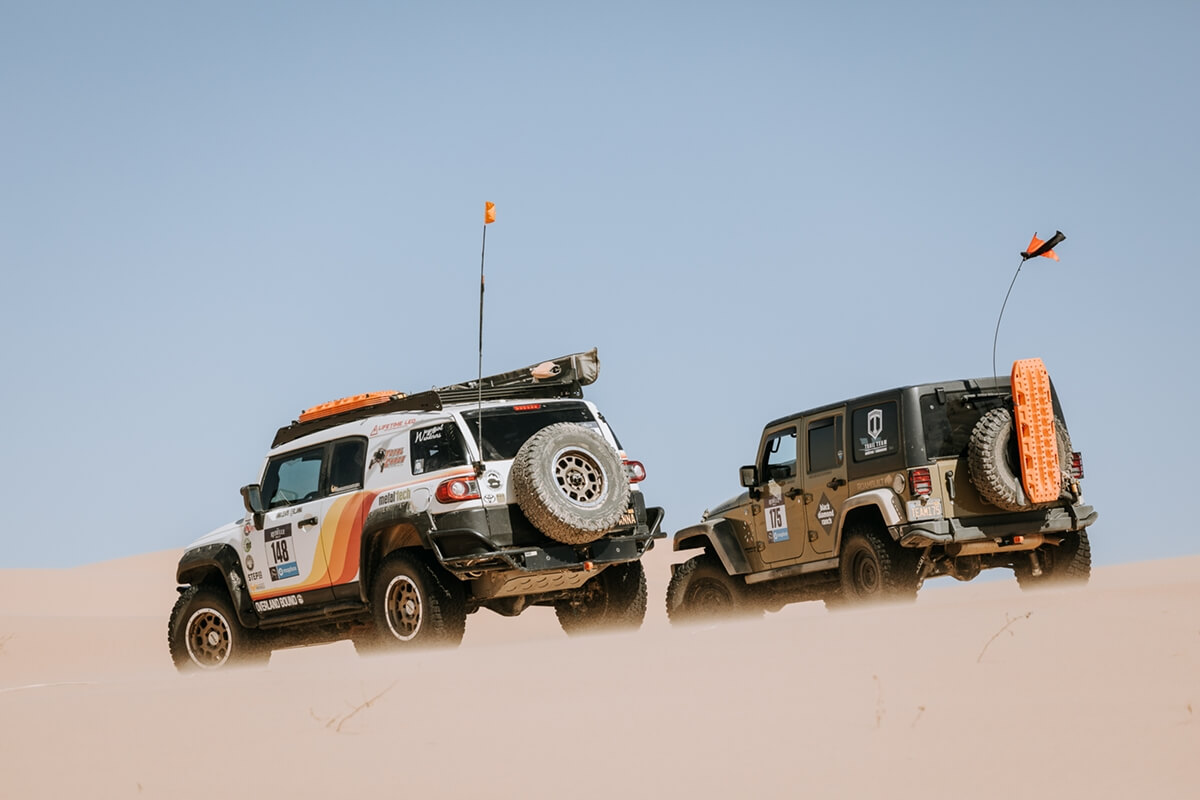
The Rebelle Rally isn’t for racecars or Trophy Trucks. A maximum 35-inch tire size is allowed and all vehicles must be street legal. Lots of the vehicles that compete in the Rebelle Rally are used as daily drivers.
The Competitors
There are only two classes in the rally: 4×4 and Crossover. The distinguishing factor is whether the vehicle has a transfer case with a low range. The Crossover Class forgoes some of the CPs that require low gearing to reach. Tire size is limited to 35-inches, and most of the teams compete in their daily drivers, including Jeep Wranglers and Toyota 4Runners with mild modifications. There is also an award for the top finisher in a stock vehicle, the Bone Stock Award. OEMs looking to prove that their vehicles are tough enough to withstand a week of punishment off-road covet this award. Jeep won the honor in 2018 and Lexus took the prize this year. In 2018 and 2019, Honda sent two factory entries in the Crossover Class, piloted by two female engineers who work for the company.
While you might expect the bulk of the field to be female off-roaders from short-course and desert racing, that isn’t the demographic that makes up the Rebelle Rally. In fact, the bulk of the competitors work in Science, Technology, Engineering, and Math (STEM). They include the mother and daughter team of Christine and Emily Benzie, who are an aerospace engineer and genetic immunologist, respectively. Kris Vockler, a Jeeper from Portland who is the CEO of the chemical company ICD High Performance Coatings, also competes.
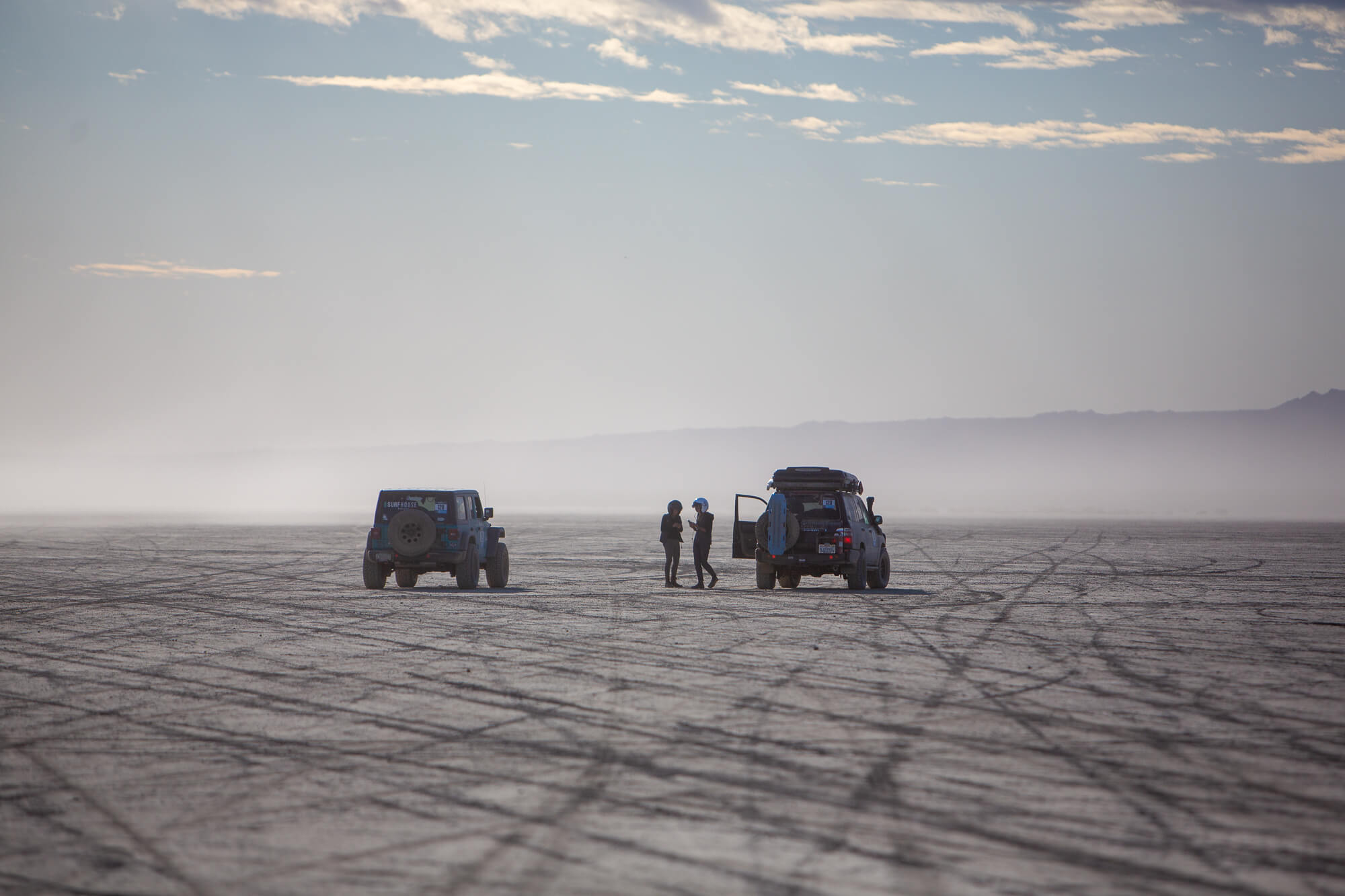
The Rebelle Rally isn’t about who is the fastest or has spent the most money on their rig. Instead, it constantly challenges competitors putting them in tough situations. They have to rely on themselves and each other to overcome what is put in their path and finish each stage. Those that finish the Rebelle leave the rally with a huge sense of accomplishment.
The Cause
We would be remiss to talk about the Rebelle Rally and not mention the cost. At $12,000 per team, it isn’t cheap, but you couldn’t expect to race something like the Mint 400 or King of the Hammers for less. For that price teams get a ratio of staff to competitors of 1:1, food from Michelin-star chef Drew Deckman and his staff, and a huge party on the San Diego harbor at the end of the event. “The biggest expense is permitting across so many BLM districts,” Miller explains. Each BLM district requires its own Environmental Impact Study (EIS), which can cost five figures alone. Even though it can be daunting, Miller is committed to crossing all of her T’s and dotting all of her I’s when it comes to the Rebelle Rally.
And that isn’t her only commitment. This year Miller announced the creation of the visionary Rebelle Impact program, which was designed to give microloans to women around the world to provide them opportunities they would otherwise be denied. “We have already given out 23 loans and funded 18 girls to go to school for the next year,” Miller proudly reveals. Additional funds are donated to charities, as well. Each team picks a charity to support, and the highest-ranked international team and the competitors that win the Team Spirit Award (as voted on by their peers) have money contributed in their name. This year Team Clearwater Design won the International Cup for the third year in a row, earning them $2,500 for the Alzheimer Society of Canada. Team Record The Journey won $5,000 for the non-profit organization Record The Journey. It provides veterans and their families with transition support through outdoor photography adventures.
Philanthropy, amazing scenery, and world-class cuisine amongst grueling competition all make the Rebelle Rally like no other. It seems that plenty of off-road events open to men could learn a thing or two from the Rebelle Rally. Emily Miller’s vision is crystal clear coming into 2020.



2